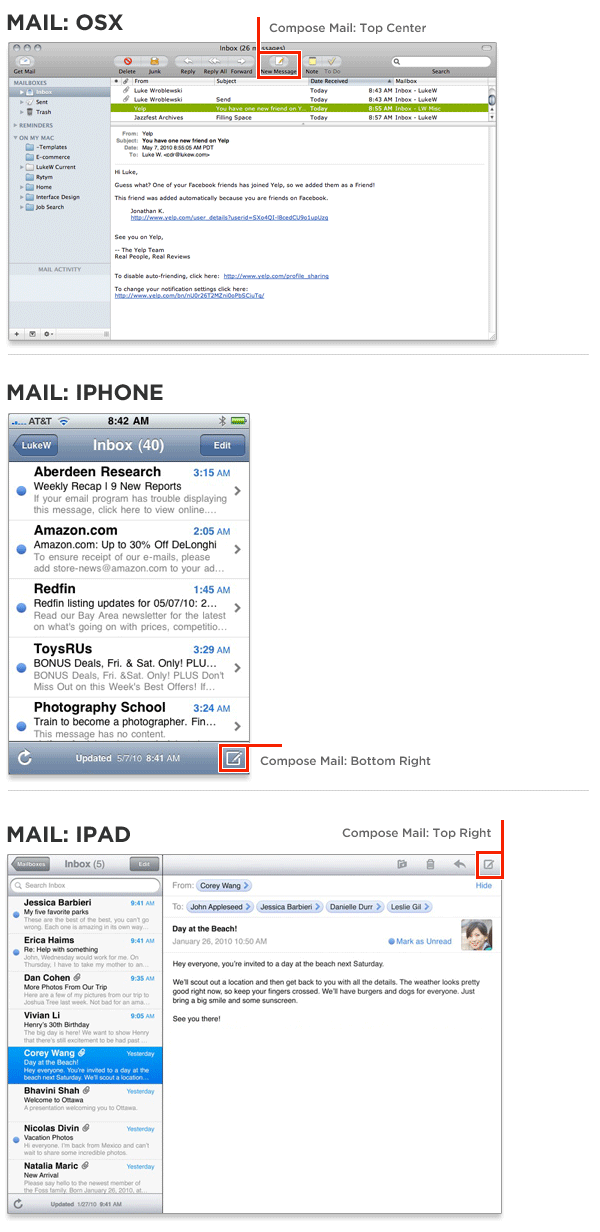Muscle memory turns repetitive physical tasks into an unconscious process. In other words, when we perform a physical action enough times, we don't really have to think about the process of doing it.
With muscle memory, our body just does things automatically. Our actions require less attention and we get "maximum efficiency within our motor and memory systems". Since our interactions with most digital software are physical (mouse, touch, keyboard), muscle memory is an important consideration in interface design.
As the quantity of digital devices we interact with on a daily basis increases, it's interesting to consider the impact of muscle memory on recurring tasks. Let's look the simple action of composing an email message across a few Apple devices. If you've been using Apple's Mail product on OSX, the compose Mail action is located in top center of the header. If you move to the iPhone, compose is in the bottom right corner. Switch over to the iPad and the compose email action is in the upper right.

These distinct locations for common tasks make it really hard to use muscle memory effectively. I personally find myself regularly moving my finger to the lower right on the iPad and not finding the compose action I'm used to being there on the iPhone.
Granted, there are certain limitations and opportunities on each unique device that can play a role in where key actions need to be. But as we design products to work across multiple devices, we should consider how to take advantage of muscle memory to help people get things done more effectively.